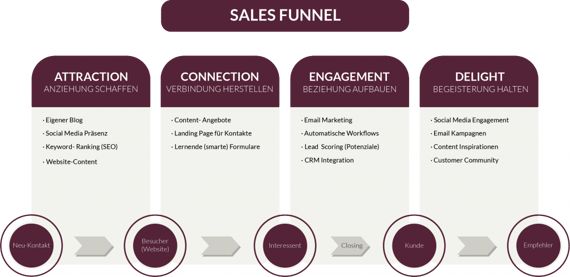Wouldn't it be nice if every person you communicated with through your website were an ideal candidate for your product or service? Imagine a world where prospects come to you—where you know exactly what they want, how they found you, and what information you need to provide.
In today's world, it's all about providing information to your prospects faster than your competition.
This sales utopia may still be a dream for now, but modern technology can already help improve the entire sales experience. Lead management is one such technology that helps your company track and optimize the entire sales process in a timely manner.
If you're new to marketing or sales, you might not be familiar with this concept or may not have encountered it yet.
Below, we'll explain how lead management works and why your company urgently needs it.
What is Lead Management?
Lead management is the technique of tracking and managing prospects, also known as leads. Sometimes referred to as customer acquisition management or contact management, it typically includes the following processes:
- Lead Generation: Companies generate interest in their products or services among potential customers using a range of marketing techniques. These techniques, known today as inbound and outbound marketing, include blog posts, whitepapers, social media, events, and PR campaigns.
- Customer Inquiries and Lead Capturing: Potential customers respond to your marketing efforts, and these interactions are recorded in your CRM system. This creates a sales lead and provides a competitive advantage.
- Filtering, Evaluating, Distributing, and Contacting: Leads are filtered based on the validity of their inquiries, their interactions with your website, and the method by which they became a lead. They are then passed to the sales team for contact. Depending on the size of your marketing program, categorizing and sorting leads can be labor-intensive.
- Lead Nurturing: A follow-up process is established for all leads, depending on whether they have been contacted previously.
When the process ends with a sale, your lead has successfully navigated the sales funnel and has become a customer. However, your work does not stop there.
The complexity of lead management depends on the size of the company—the management of 200 leads is vastly different from managing 2,000 or 20,000 leads. When these leads become customers, the company must continue to nurture these relationships.
In short: Follow-up is crucial for maintaining high customer satisfaction and sales efficiency.
Lead vs. Customer: What’s the Difference
Lead Management often comes up in discussions about CRM (Customer Relationship Management), and it can be challenging to distinguish between the two.
Here is a summary:
- Prospect: A person in your target market with the right demographic characteristics.
- Lead: A person in your target market with the right demographic characteristics who shows interest in your services or solutions.
- Customer: A person who has purchased your service or solution.
So what exactly can Lead Management do here?
Lead Management makes your sales team more effective by creating a pool of leads and then filtering out the unqualified ones.
Isn't it easier for a salesperson to call 10 qualified leads rather than 30 unqualified ones?
Why Do You Need Lead Management?
The process of lead management helps companies filter out which tactics bring the best and most qualified leads, allowing the sales strategy to be optimized for efficiency and effectiveness.
In today's world, you can't afford to lose a lead or miss a sales opportunity.
Lead management can prevent this! By recording all interactions of the potential customer with your company, you can precisely analyze how a person transitioned from a prospect to a lead and then to a customer.
In addition to marketing benefits, this method of managing leads can have a significant impact on the bottom line.

Lead Management ist das Rückgrat eines erfolgreichen Vertriebs.
Conclusion
Without effective leads, there is no need for a CRM system or even a sales team.
This concept covers the first step in the sales cycle to create qualified opportunities and ultimately satisfied customers.


